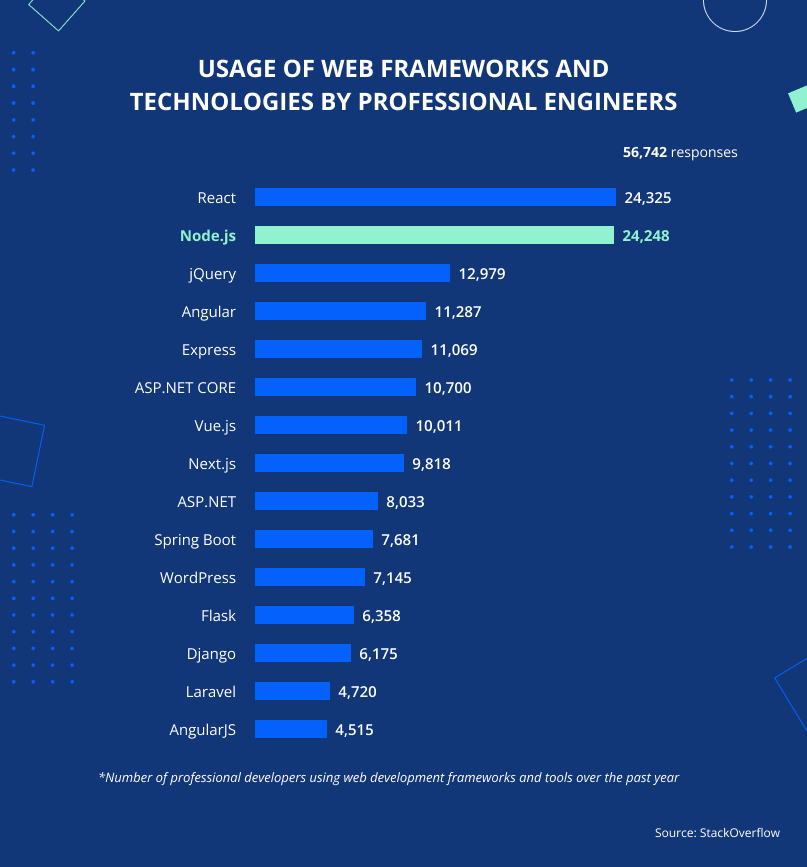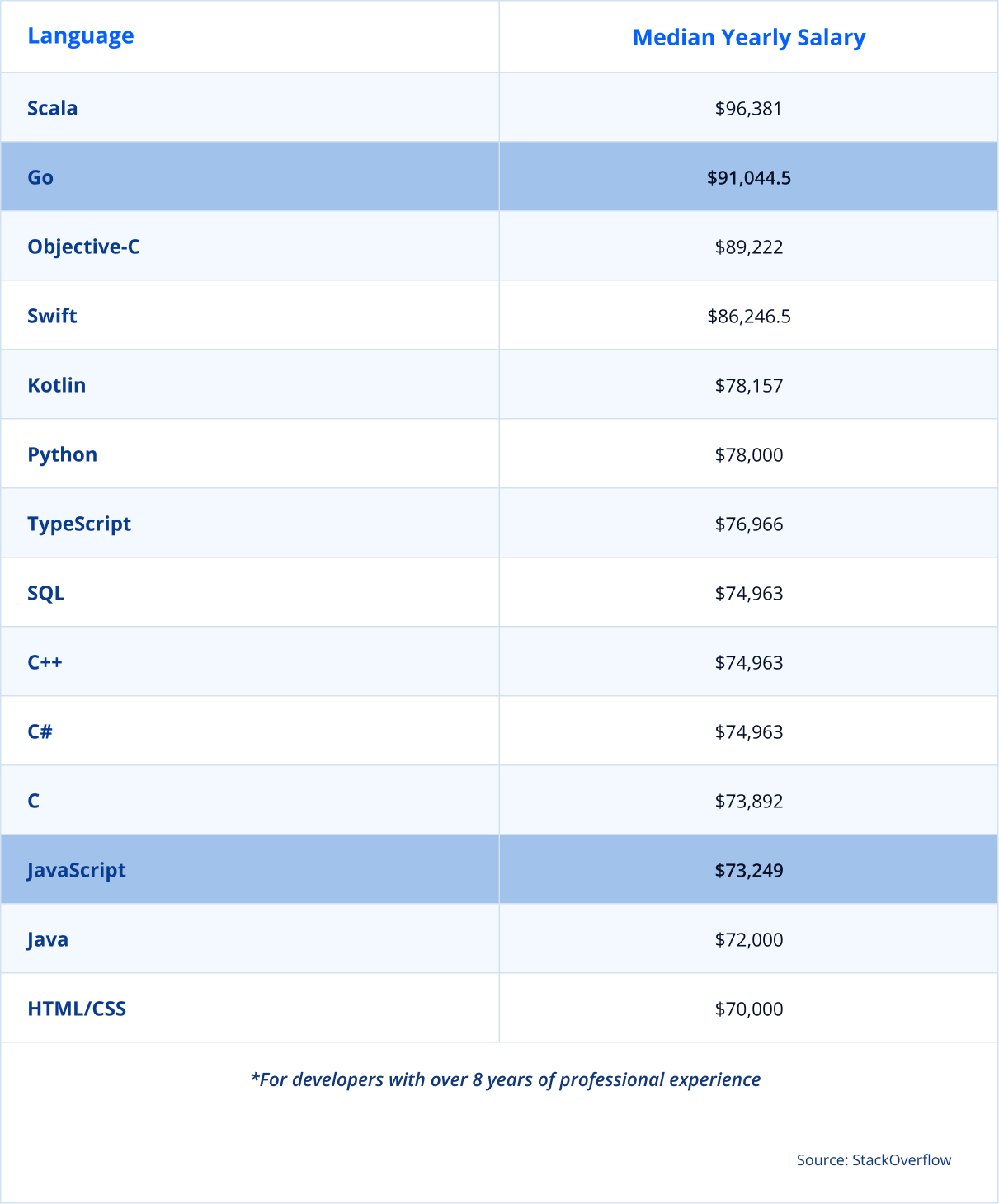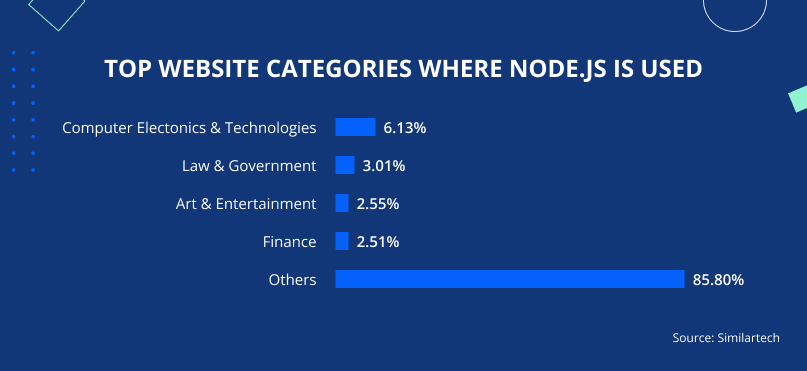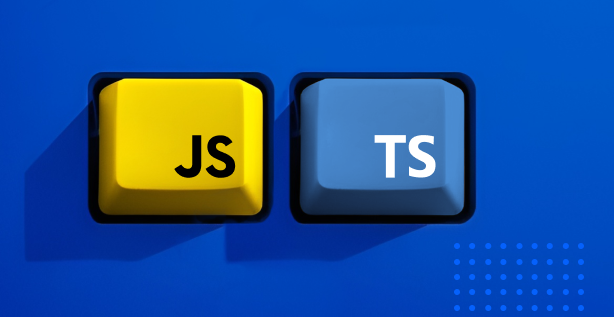Everything hidden from the end-user’s eyes — the back-end structure of a website or web application — requires careful consideration. The server side (or back end) plays a crucial role in determining an application’s speed, stability, and security, thereby directly impacting the overall user experience.
When building server-side applications, choosing the appropriate programming languages is of the utmost importance. Two prominent contenders in this arena are Go and Node.js. By being different software development tools, they offer unique capabilities and cater to contrasting scenarios.
In this blog post, we will guide you through the differences between Go and NodeJS by examining their features and use cases. By delving into the nuances of Go vs Node.js, you can choose a distinguished technology that perfectly aligns with your project requirements and business needs.
What is Node JS?
Node.js is an open-source, cross-platform runtime environment designed for executing JavaScript code. It was introduced by Ryan Dahl in 2009 and is now backed by the JS Foundation, an organization dedicated to maintaining JavaScript-related technologies.
Node.js stands out by enabling engineers to use JavaScript as a single programming language for both the front end and back end of web applications. This simplifies the web development process and positions Node.js as a leading framework among other web development tools:
What is Go Language?
Go, also known as Golang, is an open-source programming language developed by Google with a focus on simplicity, performance, and scalability.
When comparing Go vs Node JS, Golang is specifically designed for back-end development, addressing the needs of modern server-side solutions. It combines the security and efficiency of the C programming language with the simplicity of Python, making programming easier and faster for projects growing in scale.
Over the last several years, Go has been gaining significant popularity among other programming languages:
Golang vs Node: What Makes Them Powerful?
When comparing Node JS vs Golang, each technology has its dominant strengths, making them distinctly powerful.
One of the outstanding Go features is concurrent programming, which enables the efficient handling of multiple tasks at once. This capability ensures high app responsiveness even under heavy workloads. Eventually, this empowers the creation of sophisticated and scalable applications.
On the other hand, Node.js is powered by an asynchronous event-driven architecture, enabling the processing of multiple requests with low latency, such as inputs from the keyboard or user authorization. This feature makes Node.js particularly powerful for applications requiring real-time interactions, like chat applications or streaming services.
Both Node.js and Golang are cross-platform technologies, providing significant flexibility and cost savings. NodeJS and Go apps can be deployed on multiple platforms, including Windows, macOS, and Linux, without substantial code modifications.
Pros and Cons of Golang
In the context of Node.js vs Go, the latter offers the following unique characteristics:
- High Performance: Being a compiled language, the Go code is translated into machine code before execution. This results in faster speed for high-demand applications.
- Advanced Security: The standard library of Go tools reduces dependence on third-party libraries and the possibility of security breaches. Go is also a statically typed language, which enhances code reliability and reduces runtime errors.
- Efficiency: Go utilizes garbage collection for automatic memory management. This leads to lower system resource consumption and cost-effectiveness.
- Scalability: Go’s ability to handle multiple tasks concurrently enables applications to grow seamlessly with increasing user demands.
However, Golang also has some limitations:
- Limited GUI Capabilities: Go is primarily a server-side technology. The one way to use Go for the front end is by compiling it into WebAssembly.
- Smaller Developer Pool: While Go’s syntax is simple, it is a relatively new programming language compared to Java, Python, or JavaScript.
Pros and Cons of Node.js
In the Node JS vs Golang debate, the former stands out by offering:
- Responsiveness: At its core, Node.js leverages the highly performant V8 JavaScript engine used by Google Chrome. Paired with event-driven architecture, it ensures the application will work well even with increasing traffic.
- Flexibility: Node.js expands the possibilities of JavaScript beyond the browser, allowing developers to use a single language for everything.
- Cost-Effectiveness: With Node.js, you can opt for full-stack development and build an app with smaller development teams.
- Rapid Development: Node.js has a vast ecosystem of libraries and tools that cover a wide range of functionalities, thus accelerating development time.
As with any other technology, Node.js has some drawbacks which may be critical to consider:
- Limited for AI and ML: Node.js may not perform as well for tasks that require heavy computations and may not be efficient for data science and similar areas.
- Possible Maintenance Overhead: Node.js heavily relies on asynchronous programming, which may lead to complex code structures and require careful maintenance for rapidly growing solutions.
Which Companies Are Using Them?
To dive deeper into the specifics of NodeJS vs Go for web app development, let’s consider how world-known companies benefit from each.
Companies using Golang:
- Google: As a language creator, Google uses it for web indexing services, content optimization services, and pretty much everything that operates behind the scenes.
- American Express: This global financial enterprise utilizes Go solutions such as Docker and Kubernetes for its infrastructure needs. They benefit from Go’s concurrency and efficient garbage collection, which aid in processing transactions.
- Dropbox: A cloud service for hosting files relies on Go to tackle the complexities of scalability and security in their systems, serving over 500 million users.
Companies using Node.js:
- eBay: One of the largest online marketplaces adopted Node.js for several critical applications and services. Node.js handles a high volume of real-time interactions, providing a dynamic user experience.
- PayPal: A well-known payment service shifted from Java to Node.js, unifying the browser and server side with JavaScript. It resulted in a 35% decrease in response time and accelerated development with fewer people.
- Netflix: A leading streaming platform opted for Node.js to enhance interaction between the back end and front end. This helped to improve loading times and content delivery to users.
Golang vs NodeJS Comparison for Back-End Development
While both technologies are solid tools for scalable web applications, they excel in particular scenarios. Let’s explore the suitability of Node.js vs Golang for specific use cases.
Golang is a powerhouse for:
- Network Programming, including APIs and web servers.
- Building frameworks, libraries, and other development tools.
- Large-scale Distributed Systems, such as microservice architectures and complex back-end systems that require high scalability.
- IT Infrastructure, where Golang is used to develop tools and services for managing and deploying applications in the cloud.
- Websites and Web Apps that can handle heavy traffic thanks to the concurrency of Golang.
- Big Data Solutions, where Go helps with CPU-intensive data processing.
On the other hand, Node.js is particularly efficient for:
- Single Page Applications (SPAs), where Node.js enables efficient communication between the client and server for a seamless user experience.
- Real-time Applications such as chats, gaming platforms, or collaboration solutions where Node.js ensures instant data updates.
- IoT Applications, where Node.js handles real-time data from connected devices.
- Microservice Architectures where Node.js enables rapid creation of numerous back-end services.
End-to-end Comparison Between Golang and NodeJS
The tech basics and use cases may not be enough to choose the most effective technology for your business case. Therefore, a head-to-head comparison of NodeJS vs Golang in terms of scalability, performance, and developer availability can help gear your final decision-making.
Simplicity & Learning Curve
According to the developer survey, Go is “Easy to learn, hard to master.” It emphasizes syntax simplicity and code readability, making it easy for developers to grasp fundamentals. However, many admit the lack of documentation for best practices leads to a steeper learning curve.
Contrarily, Node.js benefits from the familiarity of JavaScript — a heavily used programming language across various projects. This makes Node.js highly approachable for developers with prior JavaScript experience.
Overall, Go is considered a simple language but may be more time-consuming to master due to its unique philosophies. Node.js, in turn, can be adopted faster in case you have JS specialists in-house.
Scalability
When comparing Node.js vs Golang, both languages can handle increasing workloads but must be approached differently.
Golang is designed with scalability in mind. It uses lightweight threads called goroutines to process multiple requests simultaneously. This approach is more elegant and resource-efficient compared to other languages. As a result, Go Solutions can manage an increasing number of connections without any hassle.
Node.js relies on event callbacks to handle hundreds of real-time requests. As the traffic increases, this process can become messy and complex, which requires extra attention from engineers.
Ultimately, Golang applications can be scaled more effortlessly, making it a clear winner for enterprise-grade solutions. Alternatively, Node.js may require additional time and optimizations for proper scaling.
Benchmarks
Comparing the speed, memory, and resource consumption for Node JS vs Go may shed light on the more efficient technology.
Earlier, we mentioned that Golang is more resource-friendly for intensive tasks like big data processing. To support this claim with facts, the chart below demonstrates the benchmark task performance:
As observed, Go outperforms Node.js in terms of requests per second, CPU load, and memory consumption. This makes Go well-suited for optimizing resource efficiency.
Performance
Performance is a metric that is critical for the application’s average response time. It directly affects user experience and overall satisfaction. When comparing the performance benchmark of NodeJS vs Golang, it is important to consider two scenarios.
Raw Performance
The raw performance of Go vs Node is based on their technical implementations.
In many cases, Go demonstrates superior results. As a compiled language, Go translates the code into machine code before execution. This equips Go applications with fast startup times.
In this sense, Node.js falls short of matching Go. One reason is that Node.js is interpreted, which introduces an additional layer of execution overhead.
Real-Life Performance
In real-world scenarios, factors like network latency, user interaction, database server interaction, and external dependencies are considered. In this case, the performance gap between Go vs NodeJS tends to be less pronounced.
This is due to various factors such as an efficient event-driven architecture in Node.js, optimized use of asynchronous operations, and advancements in the JavaScript engine.
Overall, both Go and Node.js offer commendable performance capabilities. As a result, your choice should factor in the expected workload to ensure optimal performance.
Error Handling
Identifying and handling coding errors is a vital part of web development. The more straightforward the route is, the more robust application you get.
As a statically typed programming language, Go requires developers to declare variable types explicitly. Any mismatches are checked during the compilation, allowing developers to flag and resolve errors early in the development lifecycle. Go also promotes explicit error handling at runtime, meaning engineers handle errors manually by checking returned error values. While this approach requires more effort, it leads to predictable app behavior.
Node.js provides a more productive approach to error handling. It offers the use of promises and async functions that significantly simplify error-catching and debugging.
Thus, Go promotes a proactive mindset towards error handling for highly stable solutions. Conversely, Node.js’s approach allows for faster debugging and software development iterations.
Ecosystem
The ecosystem of libraries, frameworks, and packages available can significantly impact development speed and capabilities.
Compared to more established programming languages like JavaScript, Go has a growing ecosystem. Despite having fewer third-party packages, Go provides a standard library that covers network applications, file handling, and other essential functionalities.
Node.js benefits from a vast ecosystem of libraries and frameworks available through Node Package Manager. This extensive collection empowers technicians to leverage existing solutions for various tasks like authentication, database access, and API integrations.
Even though the Go ecosystem is smaller, this can be seen as an advantage as it reduces reliance on external dependencies. In contrast, Node.js offers thousands of ready solutions for accelerated development.
Development Tools
Proper IDE, testing frameworks, and other utilities are crucial in enhancing productivity.
The official Go distribution includes the command-line tool that simplifies building, testing, and managing Go packages. Additionally, Go includes a built-in testing framework and is supported by IDEs such as Goland, IntelliJ Idea, and VS Code.
In the case of Node.js, developers have access to a wide range of IDEs like Visual Studio Code, WebStorm, and Atom, providing features for code editing, debugging, and project management. Additionally, Node.js can be integrated with testing frameworks such as Mocha and Jest.
Node.js vs Golang both provide a rich set of development tools that enable a seamless workflow and help in proper app delivery.
Community
A vast developer community usually actively contributes to the development of any technology. At the same time, it helps beginners (and experienced engineers) to overcome tricky development issues.
Golang, as a relatively young language, has a growing and enthusiastic community. It has approximately 2K contributors on GitHub while being supported and enhanced by Google.
Node.js has one of the largest tech communities, offering numerous forums, online resources, and support channels. It has over 3K GitHub contributors and is supported by IT giants such as Microsoft and IBM.
In this Node JS vs Golang debate, Node.js is a technology with more comprehensive support and a bigger pool of specialists.
Availability of Developers
The availability of required specialists for your project is critical, especially when time is of the essence.
Referring to the StackOverflow annual survey, there are approximately 9K professional Go developers among 67K total respondents:
On the contrary, Node.js has over 24K professionals among 56K total respondents:
Of course, these statistics do not reflect the global figures. However, they do highlight the significant difference between Node vs Golang, with Node.js having approximately three times more experienced professionals.
Therefore, opting for Node.js can expedite hiring for projects requiring immediate staffing.
Developer Salaries
Developer salaries vary widely depending on location, experience, developers’ demand, and availability.
When comparing Node vs Go in this context, experienced Golang developers earn, on average, $92,720 (not including bonuses, perks, and taxes). The global average for JavaScript/Node.js specialists is nearly $74,034 (without additional costs).
Such a salary gap is based on a bigger developer pool proficient in Node.js technology:
To optimize budgets, consider regions like Central or North-Eastern Europe, which offer numerous IT agencies and affordable hourly rates. For example, in Lithuania or Poland, you can expect hourly rates of around $49 for Go engineers and approximately $45 for Node.js professionals.
Golang vs NodeJS: Which One is Here to Stay?
Go vs NodeJS have both demonstrated long-term viability, and they continue to evolve to meet the changing needs of the industry.
Golang has experienced steady growth since its release, gaining popularity for its strong concurrency support and stellar scalability. Google provides major updates twice a year, bringing enhancements in security, toolchains, and documentation. Meanwhile, Node.js is widely used across various website categories. Below, you’ll find insights into the types of software development tasks performed with Go and JavaScript (Node.js).
Node.js has become a dominant force in web application development, powering some of the most popular solutions worldwide. Its further growth is fueled by continuous performance, scalability, and architecture improvements. Node.js is backed by IT giants and remains a leader in real-time applications and APIs.
Developers acknowledge both technologies as promising, with increasing interest in AI/ML direction and the Rust language:
The significant industry support from engineers and tech companies indicates a confident outlook for the further usage of Node.js and Go.
Conclusion: Which One to Choose?
To provide a clear picture of Node.js vs Go peculiarities, we’ve composed a table comparing their core technical attributes:
When choosing the right technology, it’s important to align technical parameters with business considerations. This will help you determine when to use NodeJS and when to use Go for your particular needs.
Go is a preferred choice for:
- Highly scalable network applications with efficient resource utilization,
- Large-scale distributed systems and complex back-end architectures,
- Performance-critical web apps requiring fast startup times and low latency,
- Infrastructure-related projects involving the development of tools and services for cloud management,
- Projects aiming to optimize resource efficiency and reduce infrastructure costs.
Node.js is effective for:
- Web apps of varying complexity, from single-page applications to streaming solutions,
- Real-time applications that need instant updates, like online chats or collaboration tools,
- Projects requiring a full-stack technology for seamless front-end and back-end development,
- Projects with time-to-market considerations, such as MVP development.
One more significant aspect is the availability of required professionals — Node.js provides a larger talent pool and may require fewer talents to accomplish project goals.
If you lack vetted engineers for your next Node.js solution, you’ve landed on the right page. JayDevs offers highly skilled specialists who are ready to hop on your project within 7 days. Contact JayDevs to hire Node.js developers today!

























